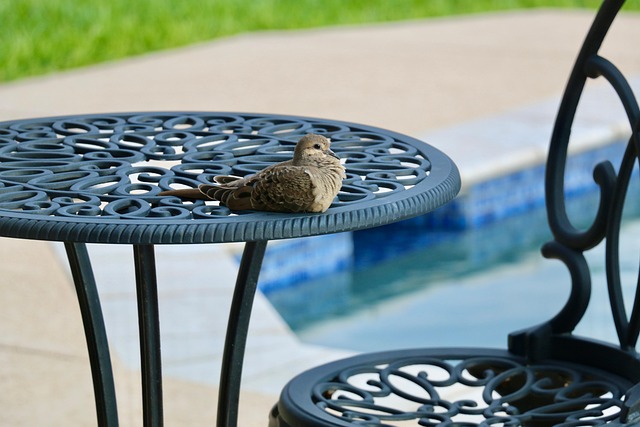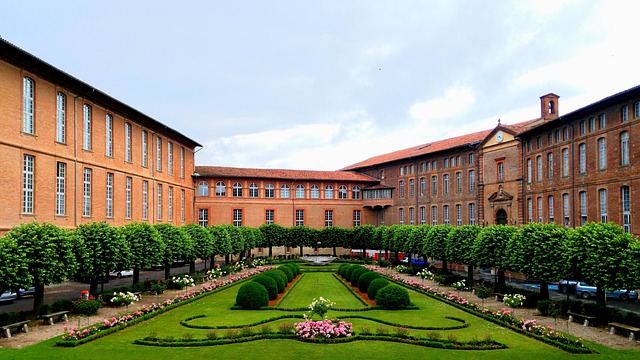Modern homes maximize outdoor living spaces with seamlessly integrated patios, decks, and artistic landscaping that blend harmoniously with nature. Strategic plant selection offers functional benefits like shade, privacy, and natural beauty, enhancing aesthetics and creating a cohesive environment. This holistic approach, including native plants, balanced textures, and lighting features, results in inviting outdoor spaces that elevate occupants' lifestyles and well-being.
In today’s trend towards maximizing indoor-outdoor flow, seamless integration of patios and decks with landscaping is more important than ever. This article explores how to create cohesive outdoor living spaces that blend beautifully with nature. From understanding foundational design principles to selecting harmonious plants and considering both functional and aesthetic elements, we’ll guide you through transforming your backyard into a vibrant, inviting oasis. Discover the art of blending form and function for an enhanced outdoor experience.
- Understanding Outdoor Living Spaces: The Foundation of Modern Patios and Decks
- Landscaping Design: A Key to Seamless Integration
- Choosing the Right Plants and Flowers for Harmonious Coexistence
- Functional and Aesthetic Considerations for a Perfect Blend with Surroundings
Understanding Outdoor Living Spaces: The Foundation of Modern Patios and Decks

Outdoor living spaces have evolved into integral parts of modern homes, offering a seamless extension of indoor comfort and style to the exterior. Patios and decks serve as the foundation for these outdoor oases, providing versatile areas for dining, entertaining, and relaxation. The integration of these structures with landscaping is where true artistry comes into play, transforming ordinary spaces into vibrant, inviting environments.
By carefully considering design, materials, and plant life, patios and decks can blend harmoniously with their surroundings, creating a cohesive outdoor living experience. Landscaping not only enhances the aesthetic appeal but also offers functionality—shading, privacy, and natural beauty that complement the overall design philosophy of the home. This harmonious union of architecture and nature ensures that outdoor spaces are not just additional square footage but truly livable, beautiful, and integral to the lifestyle and well-being of the occupants.
Landscaping Design: A Key to Seamless Integration

Landscaping design plays a pivotal role in achieving seamless integration between patios, decks, and the broader outdoor living spaces they enhance. Strategic placement of plants, flowers, and shrubs can serve as natural dividers or create a sense of continuity, harmoniously blending these structures with their environment. Well-designed landscaping not only adds aesthetic appeal but also provides functional benefits by offering shade, privacy, and a transition between different areas of the outdoor space.
By carefully considering the overall layout, homeowners can ensure that patios and decks complement rather than disrupt the natural landscape. Incorporating native plants can be particularly effective, as they are well-adapted to local conditions, require less maintenance, and attract beneficial wildlife. This holistic approach to landscaping design results in a cohesive outdoor living space that feels both inviting and at one with its surroundings.
Choosing the Right Plants and Flowers for Harmonious Coexistence

When integrating patios and decks with landscaping, selecting the right plants is key to creating a harmonious outdoor living space. Choose varieties that complement your hardscapes while catering to the amount of sunlight each area receives. For shaded patios or deck corners, opt for lush, shade-loving perennials like hostas, heuchera, or ferns. In sunlit spaces, consider vibrant annuals such as petunias, zinnias, and marigolds that will burst with color throughout the season.
Flowering shrubs and trees can add texture and visual interest, while also providing privacy. Consider fragrant options like lavender, roses, or camellias to enhance the space’s ambiance. Ground covers can effectively fill in gaps between hardscape elements and plants, creating a cohesive look. Always consider the mature size of plants to ensure they don’t become overwhelming, maintaining the balance and beauty of your outdoor living spaces.
Functional and Aesthetic Considerations for a Perfect Blend with Surroundings

When seamlessly integrating patios and decks with landscaping, functional and aesthetic considerations are paramount for a perfect blend with surrounding outdoor living spaces. Firstly, functional aspects include ensuring that the design facilitates seamless transitions between different areas. This means creating paths and seating arrangements that encourage movement and comfortable interaction across all elements. For instance, strategically placed potted plants and low-growing shrubs can both enhance visual appeal and serve as natural dividers, offering privacy without blocking light or airflow.
Aesthetically, the goal is to create a harmonious balance between hardscapes (patios and decks) and softscapes (landscaping). Using complementary textures, colors, and materials from both categories helps tie the space together cohesively. Consider incorporating native plants that thrive in your climate to reduce maintenance while enhancing biodiversity. Moreover, careful placement of lighting features can extend the usable hours for outdoor living spaces, ensuring they remain inviting and functional throughout the day and night.
The seamless integration of patios and decks with landscaping transforms outdoor living spaces into harmonious, inviting areas that blend naturally with their surroundings. By understanding the fundamentals of outdoor design, selecting complementary plants, and considering both functionality and aesthetics, you can create a captivating outdoor oasis that enhances your lifestyle and connects you to nature. Embrace these principles to unlock the full potential of your patio or deck as a vibrant extension of your home and living environment.
